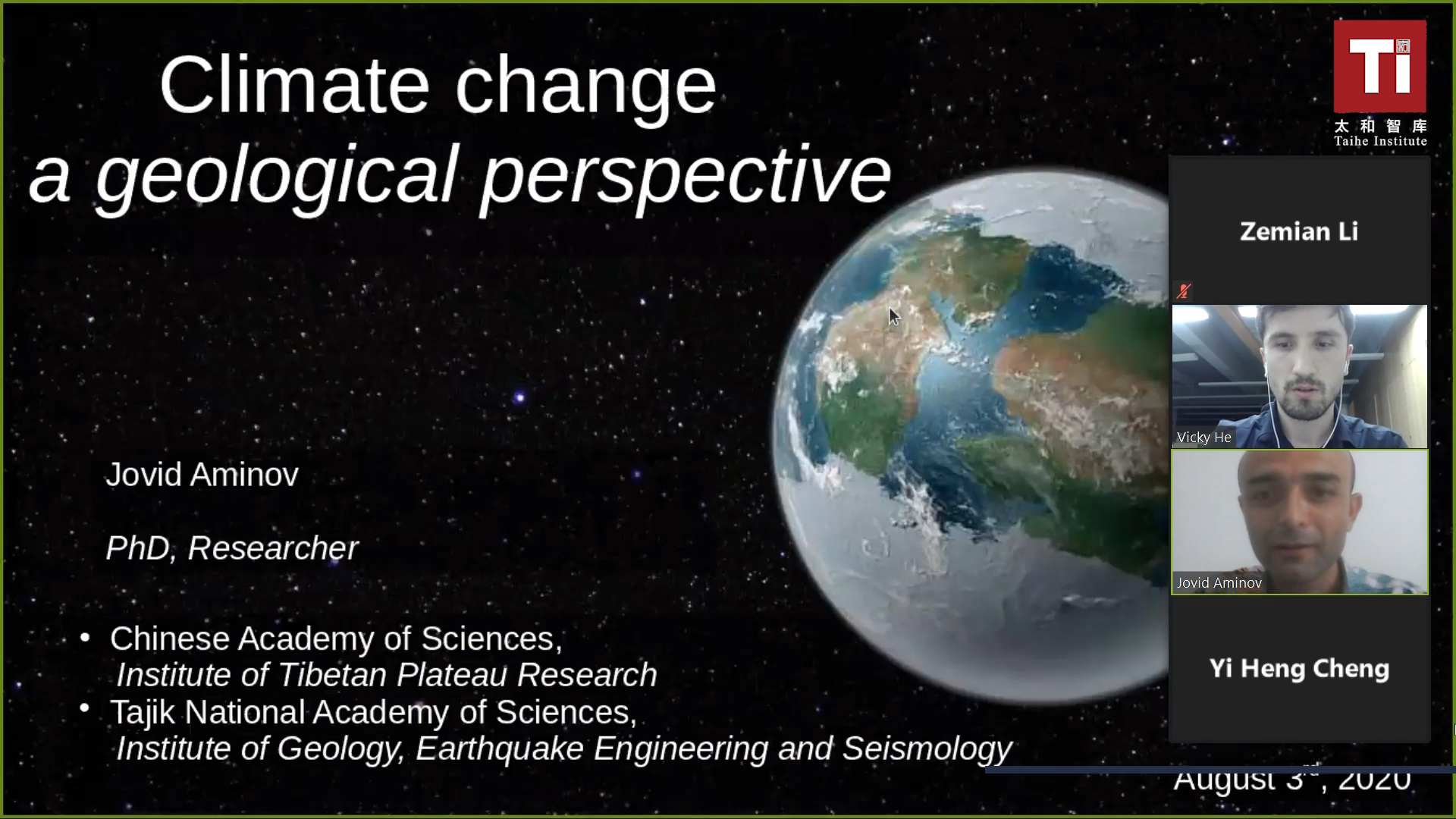On August 3, Dr. Jovid Aminov, a postdoctoral fellow at the Institute of Tibetan Plateau Research Chinese Academy of Sciences joined TYISA online event to share his research results and experience on climate change from a geological perspective.
According to Dr. Jovid Aminov, Earth's climate has constantly been changing. By switching between glacial and warm periods, it leads to extinction of many species, population migrations, and pronounced changes in the land surface and ocean circulation. Geological evidence reveals that there have been periods of times when the Earth had seen similar changes but the changes were on a very slow pace and took millions of years. He pointed out that the concentration of carbon dioxide in Earth's air recently reached over 400 parts per million (ppm) and the last time atmospheric carbon dioxide level was this high came during the Pliocene Epoch, which extended from about 5.3 million to 2.6 million years ago.
Referring to the scientific data and results, Dr. Jovid believes that since the Industrial Revolution, the Earth’s climate change has been occurring too fast in such a short period of time which makes it hard for any species to adapt to new climate conditions. According to him, if the sea level was to increase for about 100 meters in the next 10 million years, nobody would notice it and everything would adapt to it. But ongoing change is happening too quickly and we are returning the Earth to a state like the early Eocene, and we are doing it in just a few centuries. Dr. Jovid also placed particular emphasis on the main geological climate drivers such as the role of Albedo, land and sea distribution, carbon cycle, feedback effects and atmospheric composition in climate change.
The speech also highlighted climate change in the past including two snowball Earth periods and recent glaciation - the Quaternary Glaciation. A similar to present-day climate change due to high and rapid emission of carbon dioxide also occurred during the Paleocene – Eocene Thermal Maximum (55.5 million years ago) and lasted ~ 200 000 years where a huge greenhouse gases had been emitted to the atmosphere. Another turbulent climate period was during Eocene – Oligocene Transition period (34 million years ago) and lasted 500 000 years where a mass extinction took place. The global average land-sea temperature, annual average precipitation and global mean sea level during the hot periods and Ice Ages have also been discussed.
During the webinar, Dr. Jovid has emphasized the other factors that contributed to climate change in the past such as Milankovitch cycles, drifting tectonic plates that created high mountains that trap the air and create monsoons (e.g. Indian Monsoon), an eruption of huge volcanoes that emitted a huge amount of greenhouse gases and affected the Earth's climate.
Taihe Institute and TYISA focus on climate change for a long period of time. As a worldwide hot topic, climate change is connected with all human-beings, so getting acknowledged with information related to it is really significant. Taihe and TYISA would try to attract more international young scholars to join, and hold more discussions both online and offline for those people who are interested in world issues.
—————————————————————
ON TIMES WE FOCUS.
Should you have any questions, please contact us at public@taiheglobal.org
